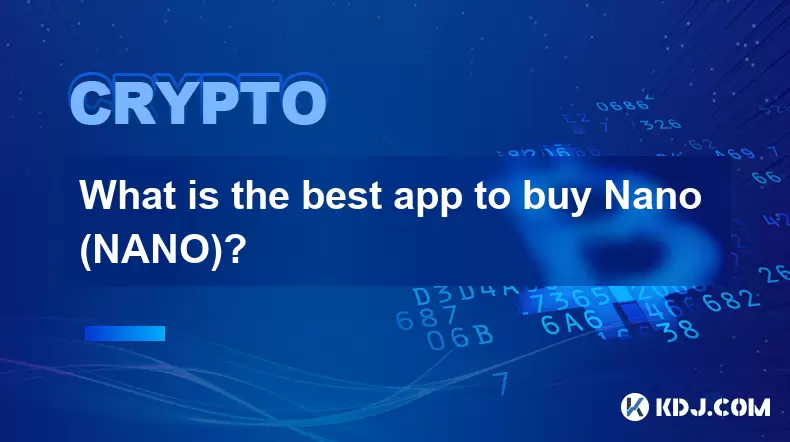-
 Bitcoin
Bitcoin $118700
1.60% -
 Ethereum
Ethereum $4230
-1.16% -
 XRP
XRP $3.197
-2.08% -
 Tether USDt
Tether USDt $1.000
-0.01% -
 BNB
BNB $803.3
-0.46% -
 Solana
Solana $183.2
0.06% -
 USDC
USDC $0.9999
0.00% -
 Dogecoin
Dogecoin $0.2343
-3.95% -
 TRON
TRON $0.3390
1.00% -
 Cardano
Cardano $0.8020
-1.93% -
 Hyperliquid
Hyperliquid $45.18
2.39% -
 Chainlink
Chainlink $22.04
3.02% -
 Stellar
Stellar $0.4449
-1.66% -
 Sui
Sui $3.872
-2.14% -
 Bitcoin Cash
Bitcoin Cash $570.6
-0.37% -
 Hedera
Hedera $0.2593
-2.92% -
 Ethena USDe
Ethena USDe $1.001
-0.01% -
 Avalanche
Avalanche $23.83
-3.79% -
 Litecoin
Litecoin $124.5
1.83% -
 Toncoin
Toncoin $3.335
-2.74% -
 UNUS SED LEO
UNUS SED LEO $9.029
0.26% -
 Shiba Inu
Shiba Inu $0.00001363
-2.31% -
 Uniswap
Uniswap $10.93
-1.42% -
 Polkadot
Polkadot $4.060
-2.29% -
 Dai
Dai $1.000
-0.01% -
 Cronos
Cronos $0.1631
2.71% -
 Ethena
Ethena $0.7746
3.06% -
 Pepe
Pepe $0.00001208
-3.73% -
 Bitget Token
Bitget Token $4.445
-1.47% -
 Monero
Monero $268.7
-2.30%
Does DYDX support cross-chain? Is the transfer speed fast?
DYDX operates on Ethereum, doesn't support cross-chain transfers natively, but users can use bridges like Anyswap for cross-chain functionality; transfer speeds vary from seconds to minutes.
May 07, 2025 at 05:56 pm

Introduction to DYDX
DYDX is a leading decentralized exchange (DEX) that primarily operates on the Ethereum blockchain. It is known for its advanced trading features, including perpetual contracts and margin trading. A common question among users is whether DYDX supports cross-chain functionality and how fast the transfer speeds are. In this article, we will explore these aspects in detail.
Understanding Cross-Chain Functionality
Cross-chain functionality refers to the ability of a blockchain platform to interact and exchange assets with other blockchains. This is crucial for enhancing liquidity and enabling users to move assets seamlessly between different networks.
DYDX, as of its current state, primarily operates on the Ethereum blockchain. This means that DYDX does not natively support cross-chain transfers. Users can only trade and manage assets that are compatible with the Ethereum network. However, this does not mean that cross-chain functionality is entirely absent from the ecosystem surrounding DYDX.
Utilizing Bridges for Cross-Chain Transfers
While DYDX itself does not support cross-chain transfers, users can utilize third-party bridges to move assets between different blockchains. These bridges act as intermediaries, allowing users to transfer assets from one blockchain to another. Here's how you can use a bridge to achieve cross-chain functionality with DYDX:
- Choose a reliable bridge: Popular options include Anyswap, Multichain, and Hop Protocol. Ensure the bridge supports the blockchains you wish to transfer between.
- Connect your wallet: Use a compatible wallet like MetaMask to connect to the bridge's interface.
- Select the source and destination chains: Choose the blockchain you are transferring from and the one you are transferring to.
- Enter the amount and token: Specify the amount of the token you want to transfer and confirm the transaction.
- Wait for the transfer: The bridge will handle the transfer, which may take some time depending on network congestion and bridge efficiency.
By using these bridges, users can effectively achieve cross-chain functionality, albeit indirectly, to interact with DYDX.
Transfer Speed on DYDX
The transfer speed on DYDX is primarily influenced by the Ethereum network's performance. Ethereum's transaction speed can vary based on several factors:
- Network Congestion: During peak times, the Ethereum network may experience high congestion, leading to slower transaction times.
- Gas Fees: Users can prioritize their transactions by paying higher gas fees, which can expedite the process.
- Smart Contract Execution: Transactions involving smart contracts, such as those on DYDX, may take longer due to the complexity of the operations involved.
On average, transfer speeds on DYDX can range from a few seconds to several minutes. Users can monitor the current network conditions and adjust their gas fees accordingly to optimize their transaction speeds.
Factors Affecting Transfer Speed
Several factors can impact the transfer speed on DYDX:
- Ethereum Block Times: Ethereum's block time is approximately 15 seconds. The transaction must be included in a block to be processed.
- Transaction Confirmation: For security, users often wait for multiple confirmations, which can extend the perceived transfer time.
- Smart Contract Interactions: DYDX's trading and margin functionalities rely on smart contracts, which can introduce additional delays.
Understanding these factors can help users better manage their expectations and optimize their trading experience on DYDX.
Optimizing Transfer Speed on DYDX
To maximize transfer speed on DYDX, users can take several steps:
- Adjust Gas Fees: Higher gas fees can prioritize your transaction on the Ethereum network, leading to faster processing.
- Monitor Network Conditions: Use tools like Etherscan to check current network congestion and adjust your strategy accordingly.
- Use Layer 2 Solutions: While DYDX itself does not currently support Layer 2 solutions, users can consider moving assets to Layer 2 networks like Optimism or Arbitrum for faster transfers before interacting with DYDX.
By implementing these strategies, users can enhance their experience and minimize delays when using DYDX.
Frequently Asked Questions
Q1: Can I use DYDX on other blockchains besides Ethereum?
A1: Currently, DYDX is exclusively available on the Ethereum blockchain. To use DYDX on other blockchains, you would need to utilize third-party bridges to transfer your assets to Ethereum first.
Q2: Are there any plans for DYDX to support native cross-chain transfers?
A2: As of now, there have been no official announcements regarding native cross-chain support on DYDX. Users should stay updated through official channels for any future developments.
Q3: How can I check the current transfer speed on DYDX?
A3: You can monitor the current transfer speed on DYDX by checking the Ethereum network's congestion levels on platforms like Etherscan. Additionally, DYDX's own transaction history and confirmation times can provide insights into current speeds.
Q4: What are the risks associated with using third-party bridges for cross-chain transfers?
A4: Using third-party bridges can introduce risks such as smart contract vulnerabilities, potential loss of funds, and delays due to bridge congestion. It's essential to research and choose reputable bridges and understand the associated risks before proceeding.
Disclaimer:info@kdj.com
The information provided is not trading advice. kdj.com does not assume any responsibility for any investments made based on the information provided in this article. Cryptocurrencies are highly volatile and it is highly recommended that you invest with caution after thorough research!
If you believe that the content used on this website infringes your copyright, please contact us immediately (info@kdj.com) and we will delete it promptly.
- LYNO AI & XRP: Decoding the ROI Potential in a Shifting Crypto Landscape
- 2025-08-11 04:30:11
- Cryptos on the Cusp: Cold Wallet, Price Breakouts, and What's Hot Now
- 2025-08-11 04:50:11
- Dogecoin, Meme Coins, and Remittix Utility: What's the Hype?
- 2025-08-11 04:50:11
- Altcoin Buyouts & Market Removals: Crypto Development's Wild Ride
- 2025-08-11 04:30:11
- Bitcoin Banks Arrive: El Salvador's Bold Play with Investment Banks and Crypto
- 2025-08-11 04:55:12
- Gemini AI's Crypto Crystal Ball: Predicting 1000x Gains with Meme Coins?
- 2025-08-11 02:50:12
Related knowledge

How to purchase Aragon (ANT)?
Aug 09,2025 at 11:56pm
Understanding Aragon (ANT) and Its PurposeAragon (ANT) is a decentralized governance token that powers the Aragon Network, a platform built on the Eth...

Where to trade Band Protocol (BAND)?
Aug 10,2025 at 11:36pm
Understanding the Role of Private Keys in Cryptocurrency WalletsIn the world of cryptocurrency, a private key is one of the most critical components o...

What is the most secure way to buy Ocean Protocol (OCEAN)?
Aug 10,2025 at 01:01pm
Understanding Ocean Protocol (OCEAN) and Its EcosystemOcean Protocol (OCEAN) is a decentralized data exchange platform built on blockchain technology,...

Where can I buy UMA (UMA)?
Aug 07,2025 at 06:42pm
Understanding UMA and Its Role in Decentralized FinanceUMA (Universal Market Access) is an Ethereum-based decentralized finance (DeFi) protocol design...

How to buy Storj (STORJ) tokens?
Aug 09,2025 at 07:28am
Understanding Storj (STORJ) and Its Role in Decentralized StorageStorj is a decentralized cloud storage platform that leverages blockchain technology ...

What is the best app to buy Nano (NANO)?
Aug 09,2025 at 03:35am
Understanding Nano (NANO) and Its Unique FeaturesNano is a feeless, instant cryptocurrency designed for fast peer-to-peer transactions. Unlike many ot...

How to purchase Aragon (ANT)?
Aug 09,2025 at 11:56pm
Understanding Aragon (ANT) and Its PurposeAragon (ANT) is a decentralized governance token that powers the Aragon Network, a platform built on the Eth...

Where to trade Band Protocol (BAND)?
Aug 10,2025 at 11:36pm
Understanding the Role of Private Keys in Cryptocurrency WalletsIn the world of cryptocurrency, a private key is one of the most critical components o...

What is the most secure way to buy Ocean Protocol (OCEAN)?
Aug 10,2025 at 01:01pm
Understanding Ocean Protocol (OCEAN) and Its EcosystemOcean Protocol (OCEAN) is a decentralized data exchange platform built on blockchain technology,...

Where can I buy UMA (UMA)?
Aug 07,2025 at 06:42pm
Understanding UMA and Its Role in Decentralized FinanceUMA (Universal Market Access) is an Ethereum-based decentralized finance (DeFi) protocol design...

How to buy Storj (STORJ) tokens?
Aug 09,2025 at 07:28am
Understanding Storj (STORJ) and Its Role in Decentralized StorageStorj is a decentralized cloud storage platform that leverages blockchain technology ...

What is the best app to buy Nano (NANO)?
Aug 09,2025 at 03:35am
Understanding Nano (NANO) and Its Unique FeaturesNano is a feeless, instant cryptocurrency designed for fast peer-to-peer transactions. Unlike many ot...
See all articles

























































































